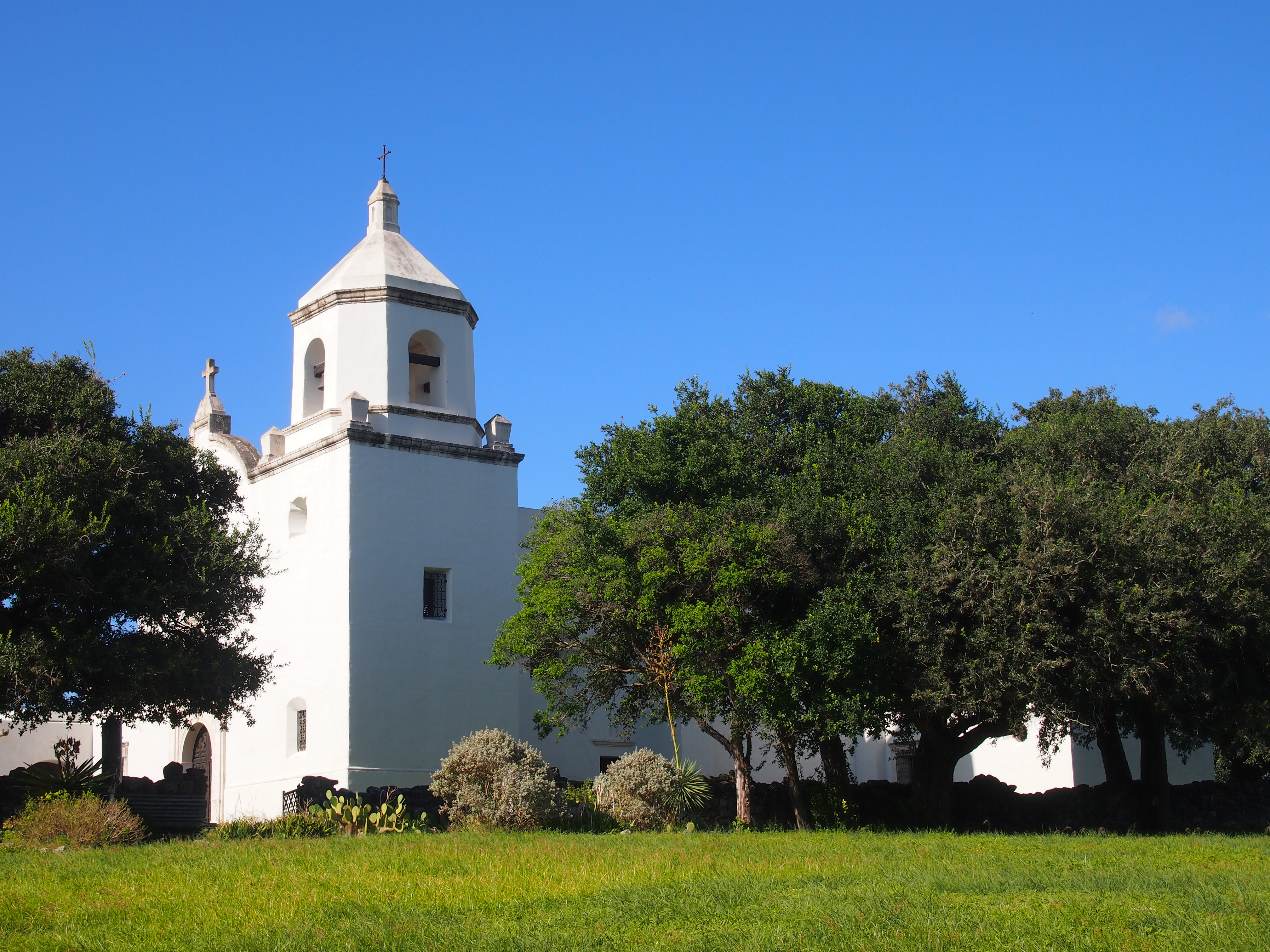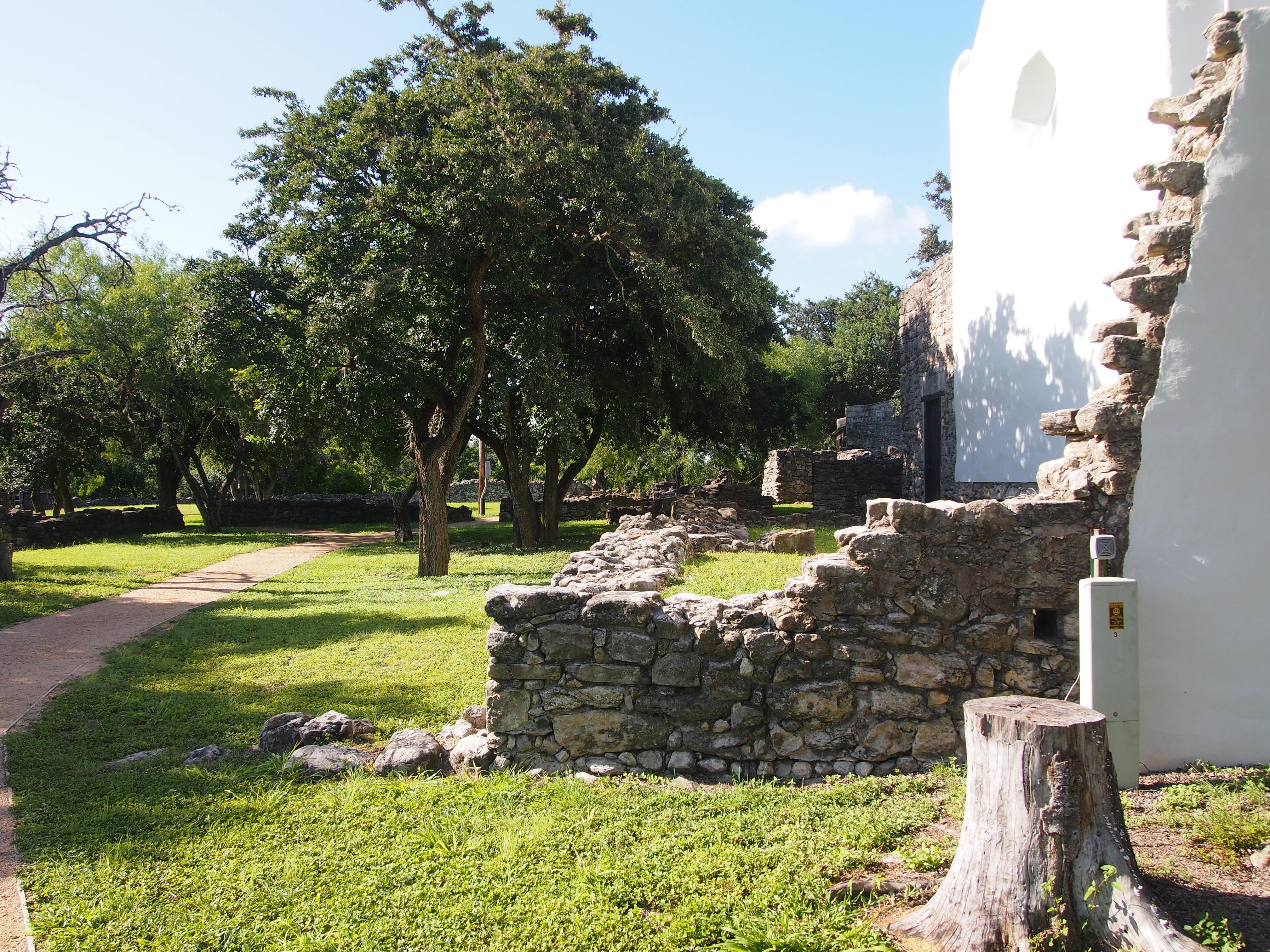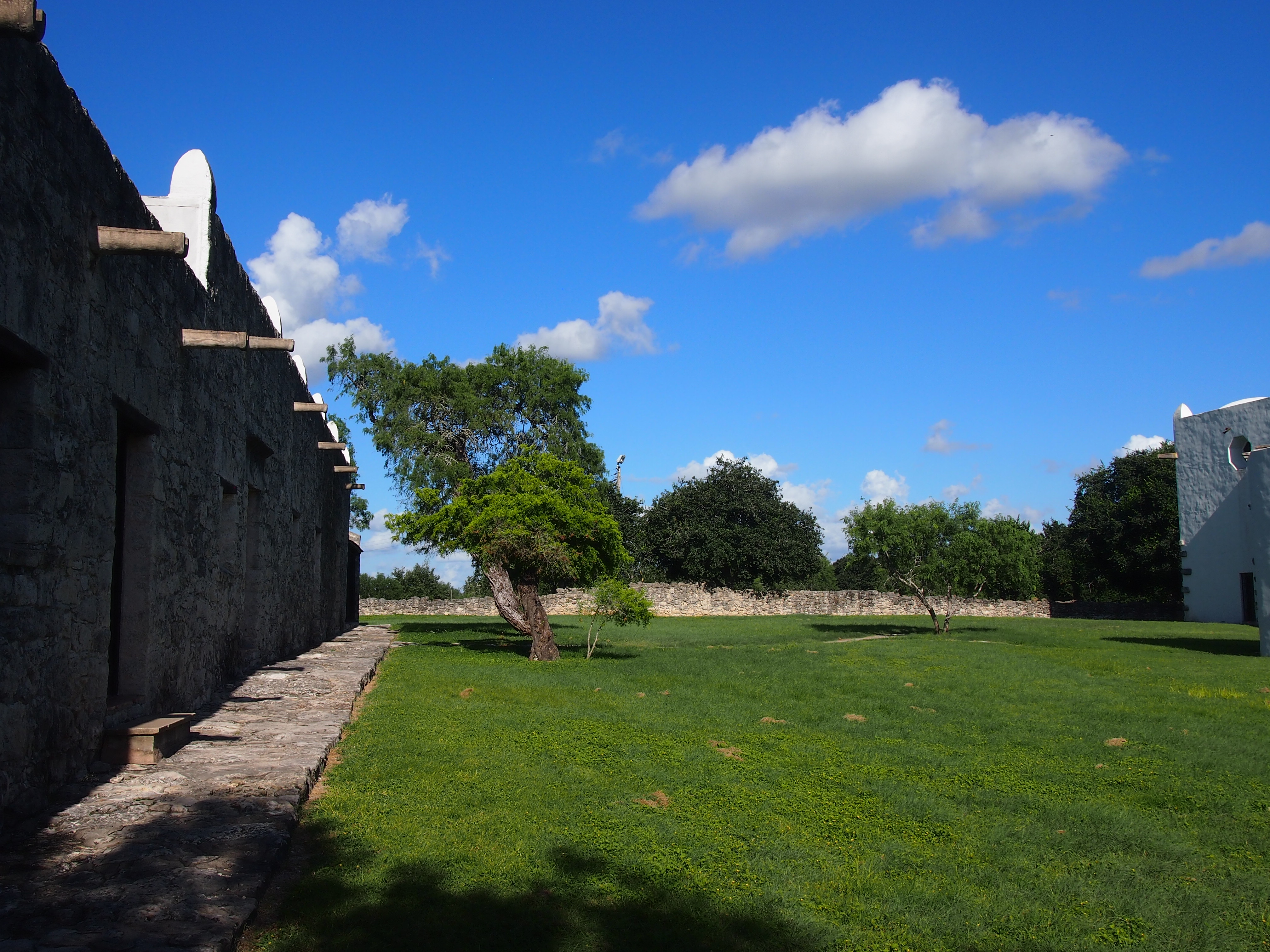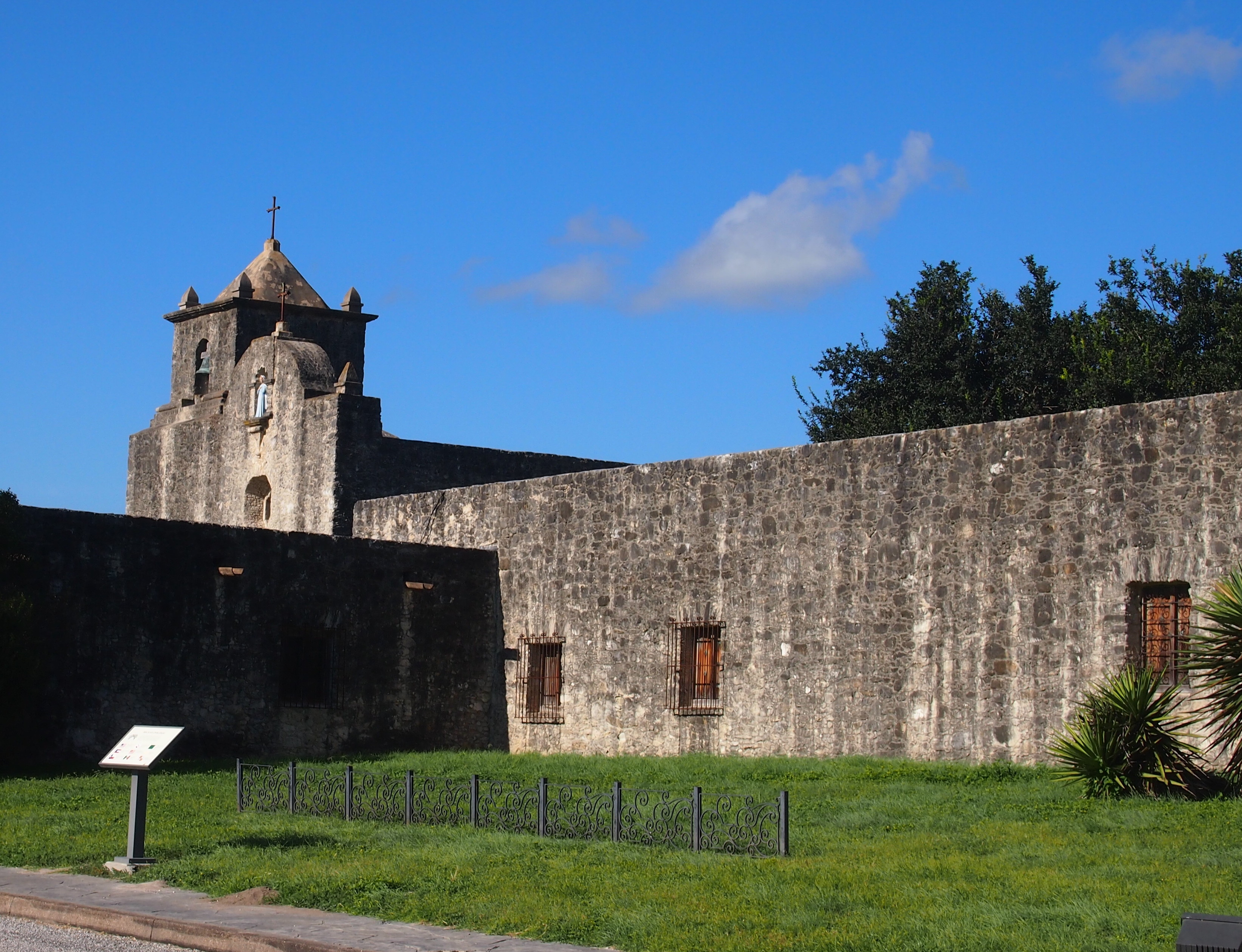Nuestra Señora del Espíritu Santo de Zuñigais is on the San Antonio River, but it’s well downstream from the SA metro area, in the modern town of Goliad. It’s been there since 1749 in one form or another, at first doing what missions did in the early days, such as convert the natives, engage in ranching, and be a part (along with the nearby presidio) of Spain’s claim to the region against French and English inroads.
By the early 20th century, it was a ruin. But not forgotten completely, because the CCC rebuilt it in the 1930s. It isn’t as well known as the chain of missions in San Antonio, including the Alamo, which were tapped by UNESCO as a World Heritage Site earlier this month. That agitated a few simple-minded crackpots, since it’s always something. So the NPS felt obliged to include the following sentence in its press release about the honor: “Inclusion of a site in the World Heritage List does not affect U.S. sovereignty or management of the sites, which remain subject only to U.S., state and local laws.”
Ann and I made our way to Mission Espíritu Santo in the late afternoon of July 11. Only one other group was visiting at the time, and in fact the interior was already closed for the day. But we got a good look at the mission and its grounds.
 Some parts are still ruins. It adds a certain something to the site.
Some parts are still ruins. It adds a certain something to the site.
 Other parts are open to the sky.
Other parts are open to the sky.
 A short drive away is Presidio La Bahía, the fort that protected the mission. In full, Presidio Nuestra Señora de Loreto de la Bahía, it was the place to go to when Apaches were coming. During the Texas Revolution, Fannin and his men were imprisoned there before they were killed not far away. In our time, that means people tell ghost stories about the place.
A short drive away is Presidio La Bahía, the fort that protected the mission. In full, Presidio Nuestra Señora de Loreto de la Bahía, it was the place to go to when Apaches were coming. During the Texas Revolution, Fannin and his men were imprisoned there before they were killed not far away. In our time, that means people tell ghost stories about the place.
 We got there after closing time. The presidio, being a fortress, has a wall all the way around — also rebuilt, I assume — so no peeks inside. That just means I’ll have to come back someday for a longer look.
We got there after closing time. The presidio, being a fortress, has a wall all the way around — also rebuilt, I assume — so no peeks inside. That just means I’ll have to come back someday for a longer look.